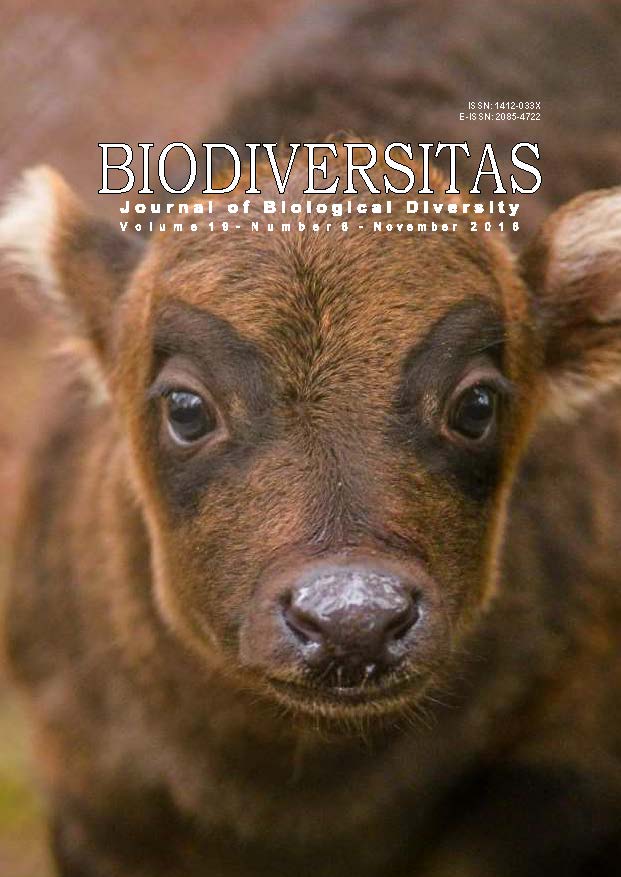Morphometric characteristics of two seagrass species (Enhalus acoroides and Cymodocea rotundata) in four small islands in North Maluku, Indonesia
##plugins.themes.bootstrap3.article.main##
Abstract
Authors. 2018. Morphometric characteristics of two seagrass species (Enhalus acoroides and Cymodocea rotundata) in four small islands in North Maluku, Indonesia. Biodiversitas 19: 2035-2043. Seagrass has an important ecological role as a protector of coastlines and small islands. It is known to be capable of forming phenotypic plasticity through morphometric variation as a response to its environmental conditions. This study aimed to determine the distribution and morphological differences between populations of two important seagrass species (Enhalus acoroides and Cymodocea rotundata) in the waters around four small islands in North Maluku. The study was conducted at two stations in each of Ternate Island and Maitara Islands, three stations at Tidore Island and one station at Hiri Island. A line transect method was used to collect seagrass samples. Morphometric characteristics included leaf sheath length, leaf length, leaf width, rhizome diameter, root length, root diameter, and internode length were measured. Discriminant analysis was performed to describe morphometric characteristics distinctive of the four islands. Leaf sheath length, leaf length, rhizome diameter, and root length of E. Acoroides differed significantly among the populations from the various islands except for leaf width. Meanwhile, leaf sheath length, leaf width, rhizome diameter, root length, and internode length differed significantly in C. rotundata among the populations from different islands except for leaf length.
